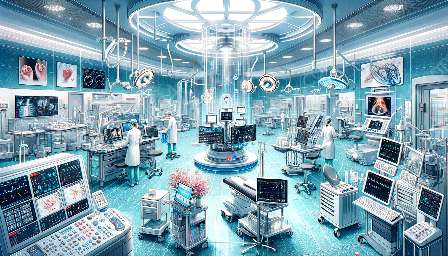Biotechnology is a rapidly evolving field that holds great promise for medical device innovation. However, it also comes with inherent limitations that impact its application in the development of medical devices. Understanding these limitations is crucial for the advancement of biotechnology in the context of medical device innovation.
Challenges in Integrating Biotechnology and Medical Devices
Biotechnology encompasses a wide range of tools and techniques that leverage biological systems to develop products and technologies for medical applications. When it comes to medical devices, the integration of biotechnology faces several challenges and limitations.
Complex Regulatory Requirements
One of the significant limitations of biotechnology in the context of medical device innovation is the complex regulatory landscape. Medical devices incorporating biotechnological components often have to navigate through stringent regulatory requirements that are specific to the biological nature of the technology. This can lead to prolonged approval times and higher development costs, creating barriers to the integration of biotechnology in medical devices.
Biocompatibility and Safety Concerns
Biotechnology-based medical devices need to address biocompatibility and safety concerns associated with the interaction of biological materials or components with the human body. Ensuring that these devices do not trigger adverse immune responses or pose risks to patients is a critical challenge. The need for comprehensive biocompatibility testing and safety assessments adds complexity to the development process and can hinder the swift advancement of biotechnology in medical device innovation.
Technical Complexity and Interdisciplinary Collaboration
The intricate nature of biotechnological advancements often requires a high degree of technical expertise and interdisciplinary collaboration. Integrating biotechnology into medical devices demands a deep understanding of both biological systems and engineering principles. Achieving seamless collaboration between biologists, engineers, and medical professionals can be challenging, leading to delays in the development timeline and potential setbacks in the optimization of biotech-integrated medical devices.
Limitations in Material Selection and Manufacturing
Material selection and manufacturing processes play a pivotal role in the development of medical devices, and biotechnology introduces unique limitations in these aspects.
Material Compatibility and Stability
The selection of materials for biotechnology-integrated medical devices requires careful consideration of compatibility and stability. Biological components may have specific storage and handling requirements, and their interaction with traditional materials used in medical device manufacturing can present challenges. Finding materials that maintain biocompatibility while meeting the functional requirements of the device can be a limiting factor in the design and production of biotechnology-driven medical devices.
Manufacturability and Scale-Up Challenges
The transition from laboratory-scale biotechnological processes to large-scale manufacturing for medical devices often presents challenges. Biotechnological innovations may involve processes that are sensitive to variations in scale, making it difficult to achieve consistent quality and reproducibility on a mass production level. Overcoming these scale-up challenges is essential for the successful implementation of biotechnology in the mass manufacturing of medical devices.
Addressing the Limitations and Moving Forward
Despite the inherent limitations, there are potential solutions and strategies for overcoming these challenges and advancing the integration of biotechnology in medical device innovation.
Advancements in Regulatory Harmonization
Efforts towards harmonizing regulatory frameworks across different regions can facilitate the approval process for biotechnology-integrated medical devices. Streamlining and unifying the regulatory requirements can reduce barriers to market entry and encourage innovation in the biotech-medical device space.
Research and Development for Biocompatible Materials
Ongoing research and development initiatives aimed at creating novel biocompatible materials can address the limitations associated with material selection for biotechnology-driven medical devices. By harnessing the potential of advanced materials, such as biodegradable polymers and bio-inspired composites, the challenges related to material compatibility and stability can be mitigated.
Interdisciplinary Training and Collaborative Initiatives
Promoting interdisciplinary training programs and fostering collaborative initiatives that bring together experts from biotechnology, engineering, and healthcare fields can enhance the seamless integration of biotechnology in medical device innovation. Encouraging knowledge exchange and cross-disciplinary partnerships can mitigate the technical complexity and accelerate the development of biotechnology-driven medical devices.
Investment in Manufacturing Technology
Investing in advanced manufacturing technologies and processes tailored to the unique requirements of biotechnology-integrated medical devices can address the challenges associated with manufacturability and scale-up. Embracing innovative manufacturing solutions, such as additive manufacturing and precision bioprocessing, can optimize the production of biotech-enabled medical devices.
Realizing the Potential of Biotechnology in Medical Devices
Overcoming the limitations of biotechnology in the context of medical device innovation requires concerted efforts from industry, regulatory authorities, and the research community. By addressing the challenges associated with regulatory, technical, and material aspects, the full potential of biotechnology can be realized in the development of innovative medical devices that offer enhanced efficacy and improved patient outcomes.


